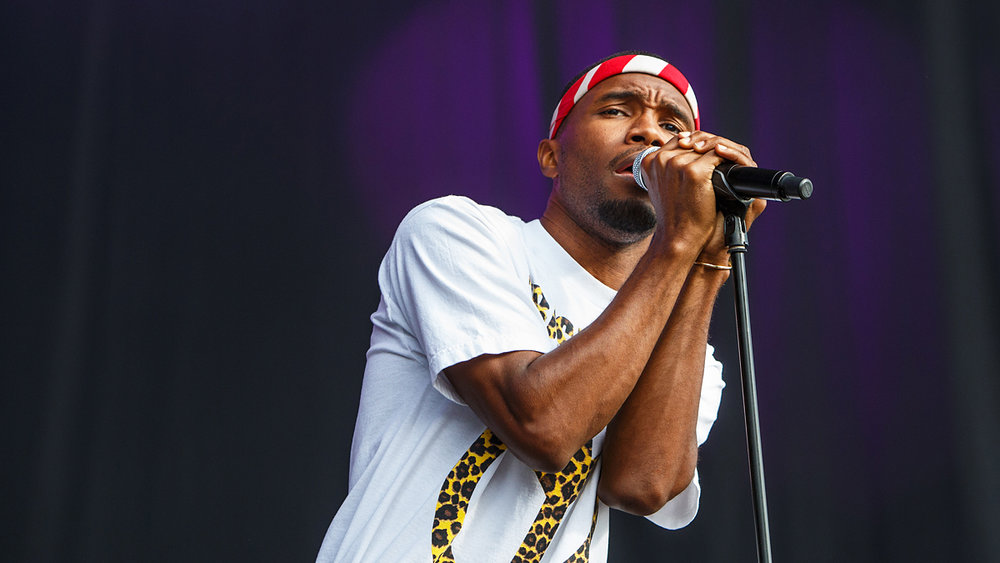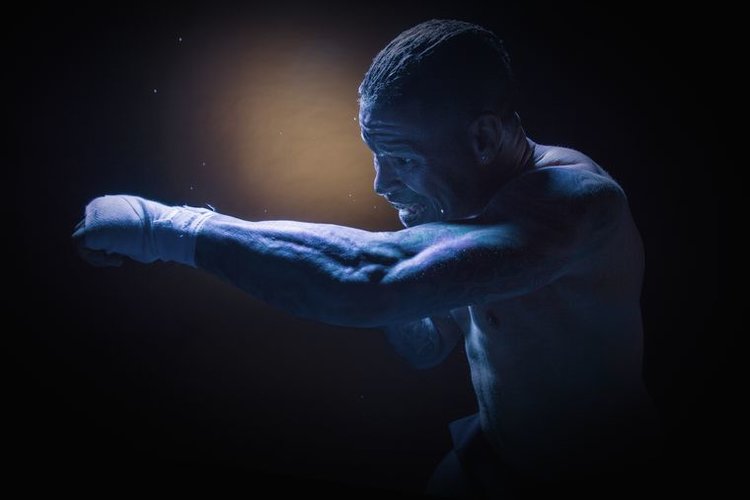Society’s idea of masculinity has been detrimental to the mental health of men for ages. But things are slowly changing and, as a result, lives are being saved.
As the Program Director at Next Gen Men — a Toronto-based, non-profit organization dedicated to building better men through youth engagement, education, and empowerment — Jermal Alleyne has asked the question, “What does it mean to be a ‘man’?” on more occasions than he cares to count. Typically, the answers given from the boys and men he works with are quite positive.
Being responsible… Doing the right thing… Acting as a provider, protector, and role model for family… Displaying strength, toughness, and independence…
It’s only when Alleyne follows with, “Have you ever heard the phrase ‘man up’?” that he, almost always, observes an immediate disconnect from those positive attributes or aspirations.
The truth is, most males associate man up with a deficit. It’s used by the coach who tells his player to stiffen up and play through the pain. It underpins the way they hurl insults like, don’t be a girl. Or pussy. Or fag.
“Don’t show fear, don’t show emotion, don’t make mistakes, don’t show weakness,” Alleyne articulates. “At the end of the day, we are taught that being a man is doing everything to not be perceived as feminine or gay.”
From there, an authoritative model of traditional masculinity begins to reveal itself. A model that, in Alleyne’s estimation, includes meeting conflict with aggression or violence. A model that, inevitably, manifests itself in detrimental social and psychological effects — particularly stubborn self-reliance, and the stifling of emotions.
PART I: ENDURING NOTIONS OF MASCULINITY
BROKEN ARMOUR
The Movember Foundation, an independent global men’s charity with the vision to have an everlasting impact on the face of men’s health, states that, across the world, men die six years earlier than women. For largely preventable reasons, too.
Because enduring notions of masculinity routinely characterize it as weakness for a man to admit he has a problem, men are more reluctant to openly discuss their health, or how they feel about the impact of significant life events; more unwilling to speak up when they don’t feel well, physically or mentally; more likely to engage in increasingly risky activities that are harmful to their health.
According to the Centre for Addiction and Mental Health (CAMH), men are also more likely to develop schizophrenia at a younger age. In fact, approximately five percent of today’s male youth, aged 12 to 19, have experienced a major depressive episode – one in 10 men will struggle with depression in his lifetime. Additionally, rates of substance use disorder are very high in males – over six percent compared to two-and-a-half percent of females.
And, in a 2017 YouGov poll, one in four young men said they were turning to self-harm as a result of depression, anxiety, and stress – many of them admitting that when they felt under pressure, they would turn to controlled eating, excessive exercise, punching walls, pulling out their hair, abusing drugs, and/or cutting themselves.
Sadly, when men finally do take action, it is often too late. Suicide rates among males are one tangible metric that can be used to measure this. Last year, the Movember Foundation determined that Canadian rates of suicide increased from seven men a day to eight. Suicide is the leading cause of death for Canadian men aged 15 to 44. It’s a ratio four times higher than that of women.
Worse yet, in the Movember Foundation’s estimation, comprehensive research continues to indicate that behaviour trends linked to traditional masculinity are largely to blame for this.
As it relates to self-harm, distinctly, a low help-seeking rate is habitually witnessed in both genders. But it’s even more pronounced for men. Why aren’t imperilled males seeking the help they need? “I think when it comes to mental health difficulties for men today, and even just historically, we know there’s a clear stigma unfortunately associated with self-injury, with suicide and, of course, with mental illness.”
So says Dr. Stephen Lewis, an Associate Professor in the Department of Psychology at the University of Guelph, whose personal experiences with self-harm motivated him to work toward helping others facing similar circumstances.
“And that’s just sort of general, across the board, in society today. I think we’ve certainly made some strides in addressing the stigma, and some of the misunderstandings and myths surrounding those concerns. But we still have a ways to go.”
Conversely, men who are confident enough to express themselves more fully in terms of what they are feeling risk ostracism. “It’s a dominant culture to not speak and not speak up,” adds Dr. John Oliffe, a Professor and Associate Director at the University of British Columbia’s (UBC) School of Nursing. “They’ll often get shut down.”
The founder and lead investigator of UBC’s Men’s Health Research program, Oliffe’s work focuses on masculinities as it influences men’s health behaviours and illness management, and its impact on partners, families, and overall life quality. “There’s pressure either way: buying into it by sucking it up, or speaking your ideas.”
LIVING UP TO THE CONVENTIONAL MASCULINE IMAGE
No doubt, the stigma relating to men’s mental health is very real. And much of what influences it relates to societal expectations, in terms of what it means to be a ‘man’, or what it means to be masculine, where it’s widely viewed as one sort of stereotype. It’s a hackneyed concept of the macho guy who is strong; a strength commonly perceived not just as physical, but in being able to persevere and remain unaffected by life’s stresses, or different types of negative life events.
Dr. Lewis concedes that living up to this traditional masculine image can lead to great internal pressure for some men who have been socialized to not discuss their difficult episodes.
“If people consider the typical ‘man’, in many ways, the first thing that they’re not going to think of is probably a man crying. Or a man showing some sort of emotional vulnerability.”
To repeat, it’s because men have been customarily designated to appear strong and stoic. Talking about feeling mentally or physically unwell can be perceived as weakness, and thanks to society at large enabling negative and harmful aspects of masculinity to serve as the recognized standard, men feel there’s only one way they can be considered “manly”.
But Lewis maintains it’s okay for men to acknowledge that they do struggle at times, and battle with a lot of the problems that maybe aren’t associated with what’s interpreted to be masculine. “We do experience anxiety. We do experience depression. We do have thoughts of suicide. Not everyone, obviously. However, the norm is that you shouldn’t be sharing those things. That you should not be vulnerable. In many ways, it leads to a lot of men feeling silenced.”
DEFY THE STIGMA
So, how do we go ahead and defy the stigma?
Part of it is educational, simply in terms of raising recognition that mental illness, self-harm, depression, and suicide are experienced by people from all walks of life, including men. Dr. Lewis believes that’s one significant piece of the puzzle. Specifically, finding places where men might interact, and ensuring they have access to necessary help-seeking resources.
“Even just showing that these resources are not limited to one demographic. There are actually ones out there specific to men. So making men conscious of them – whether it be a support group for anxiety or depression, or whatever.”
Dr. Oliffe is of a similar mentality. “Never underestimate getting men into a space to have those conversations,” he says. “Men have a lot of self-stigma because they are beating themselves up for feeling this way. And the key is to give them the ability to talk about it. You can direct them at that point to professional services.”
Awareness and advocacy campaigns can also aid in confronting dated – and dangerous – preconceptions about traditional masculinity, while readily allowing for a recently developed bracket of male narrative to enter the mainstream.
“That’s a crucial part of it,” Dr. Lewis contends. “It’s not just men having a platform to share their story – which has tremendous value, because that in and of itself can be a cathartic or empowering experience. But making certain there’s an audience, and that those stories are heard.”
He reckons more and more stories, told by more and more men – some of whom might hold prestigious places in society in regards to how they’re judged, like a celebrity, or person of high standing, or government official – can go a long way. Moreover, it can help normalize that this kind of stuff does affect men, as well as convey a sense of hope.
“Being public with it can challenge these expectations around what we should, or should not do, as men. And that it’s okay to be vulnerable and have moments in life where we do struggle. That’s just a part of the human experience.”
STRENGTH IN VULNERABILITY
Make no mistake, men are still on the hook for their behaviour and health management. Partners, family – they can’t be entirely responsible for the measures a guy takes. He has to practice his own self care. He has to find his own way of making that work for him, no matter how exposed or unprotected it may initially render him.
Although, as Dr. Lewis is quick to remind us, “there’s strength in vulnerability. And that’s often the pathway to feeling more accepted, understood and validated.”
“I mean, help’s out there. It’s a matter of getting it and reaching out for it.” Perhaps it’s high time, then, to ditch the tired old clichés of an archetypal man immune to imperfection, in charge. and always at the top. Instead, maybe this is what it really takes to be a man.
PART II: MODERN MASCULINITY
I DON’T KNOW WHAT HAPPENS NOW, AND THAT’S ALRIGHT
In recent years, there’s been a perceived shift in modern masculinity. Men’s concerns, interests, anxieties, and pride in their own gender roles – and sexuality – are no longer considered taboo, or an affront to their very manhood. Rather, these are moving to the forefront of individual and artistic expression.
Where better to glimpse this than within a global subculture where masculine ideals are most frequently at the forefront: music. More precisely, rap music.
An avowed hip-hop head, Alleyne has noticed a small shift in performers who are willing to be more conscious of their messaging. In fact, one of his Next Gen Men guest speakers was quite adamant about this stance, stating something to the effect that, as a person, one must admit and take responsibility for their mistakes. “This can be seen with JAY-Z,” Alleyne illustrates, “who in his first years was careless about homophobic and misogynistic lyrics, but matured as an artist as he grew older.”
Ditto for a rapper like Eminem, who once spewed venomous rhymes that expressed prejudice against homosexuals, but has blossomed into a more tolerant emcee, even speaking out in favour of gay marriage.


Frank Ocean | NRK P3
Similarly, you only have to look at the success of singer-songwriter Frank Ocean, who upon the release of his acclaimed 2012 debut album, Channel Orange, publicly disclosed the unrequited feelings he had for another young man when he was 19 years old. A man he refers to as his first true love. “I don’t know what happens now, and that’s alright,” Ocean announced in an open letter. “I don’t have any secrets I need kept anymore. I feel like a free man.”
Members of his industry were buoyant in their response. Iconic Def Jam patriarch, Russell Simmons, even penned a congratulatory editorial, commenting that, “Today is a big day for hip-hop. It is a day that will define who we really are. How compassionate will we be? How loving can we be? How inclusive are we? Your decision to go public about your sexual orientation gives hope and light to so many young people still living in fear.”
For a genre that originally made its name as the apotheosis of hyper-masculinity, this qualifies as an unparalleled triumph.
There is also the advancing definition of modern masculinity in the ‘Sweet Science’ – arguably the toughest, “manliest” sport on earth. Last year, contender Orlando Cruz, who was recently featured in a lululemon campaign, became the first-ever openly gay, top-ranked professional boxer to vie for a world title.
Prior to coming out, a scared and nervous Cruz would go home and cry – before and after training at the gym – broken by taunts that masculinity and homosexuality don’t mix, especially in the ring. Eventually, enough was enough. Cruz may have been gay, but knew he was a man just like any other pugilist. So he divulged his long-kept secret.
“I want respect,” the Puerto Rican native confessed in a 2016 interview on HBO’s Real Sports. “Here in my sport, outside in the street.” Cruz claims he now has that, having transformed into an icon for gay fans of the hyper-macho athletic competition.
For the onward movement of modern masculinity to soldier ahead, a unique and multi-pronged approach is definitely required. Not just through the inspiring leaps taken by public figures like Frank Ocean and Orlando Cruz, amongst others, but the frontline efforts of organizations like the Movember Foundation, whose approach is one of constructive disruption – which means being prepared to take risks and use novel approaches to solving problems.
Take their annual event involving the growing of moustaches during the month of November, initiated to raise awareness of men’s health issues, such as prostate cancer, testicular cancer and men’s suicide.
“Growing a moustache – and the fun that often goes along with it – acts as a Trojan horse to get men engaged and talking about men’s health,” reasons Mitch Hermansen, Movember’s Development Director.
In a way, it’s a ‘health by stealth’ approach. Research has indicated that each moustache grown in Movember prompts dozens of shares via social media, email, and messaging. The cause has added up to billions of conversations for men’s health.
Confronted with what many would regard as an impossible challenge, the Movember Foundation has embraced the task, and dedicated itself to designing and implementing an investment strategy that achieves the greatest possible impression. “If not us, then who? Having an everlasting impact on the face of men’s health will not be achieved through incremental change.”
PROGRESS IN DIALOGUE
If this is how modern masculinity is beginning to take shape, the future looks promising. “Things are changing for the better,” Alleyne opines. “Boys and men want to be the positive things they already believe about being a man, as well as to have emotions, make mistakes. and be vulnerable. We just need to be empathetic and give permission for men to do so.”
For his part, Dr. Lewis agrees that convictions surrounding traditional masculinity have improved. “We’re talking about it right now. The fact we’re having this dialogue speaks to the reality that we have made progress. Because we would not be having this chat 20 years ago, or 10 years ago.”
Still, he reckons there is a great deal more work to be done on behalf of modern masculinity. “I hope it becomes more expansive. I hope it becomes more fluid. And I hope it becomes more about being a human being, not so much this categorization of it’s this or it’s that.”
CREATING REAL CHANGE
Masculinity is constantly evolving, but it is ambiguous and difficult – if not impossible – to measure. And despite the matter so plainly resonating with the next generation, it remains unclear whether the breakthroughs in modern masculinity will lead to headway in deeper rooted traditional masculine influences.
If we want to create real change – if we truly want to see a reduction in the stigma and shame that men feel when it comes to help-seeking behaviours – it will require the support of many stakeholders, including the clinical community, governments, media, workplaces, and beyond. All the way down to you and me.
Again, it starts with a conversation.













